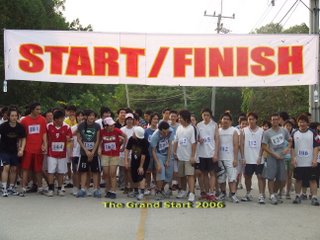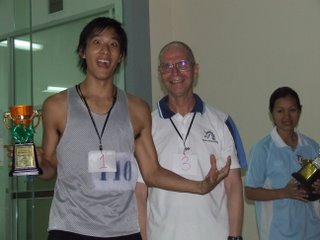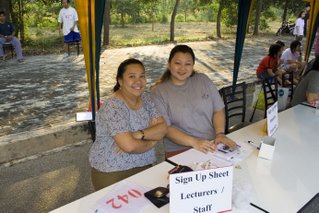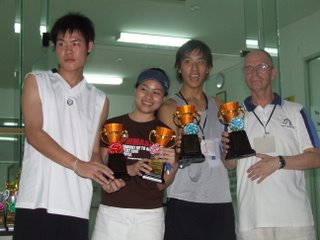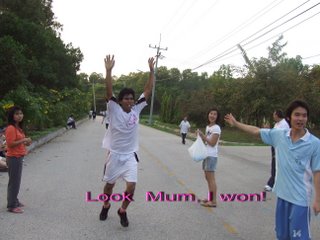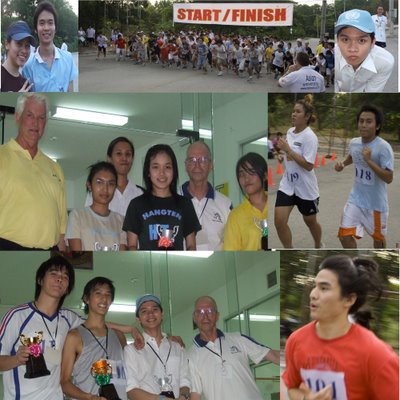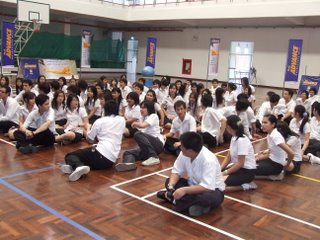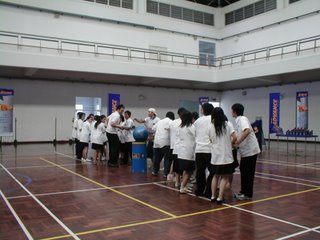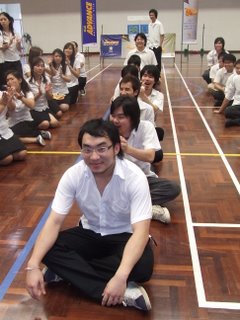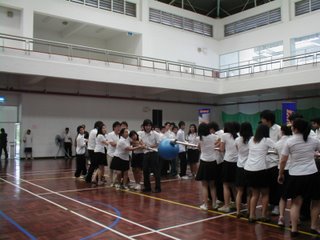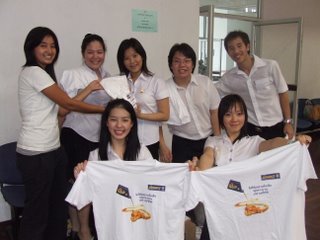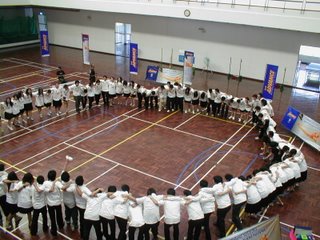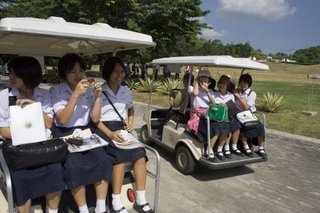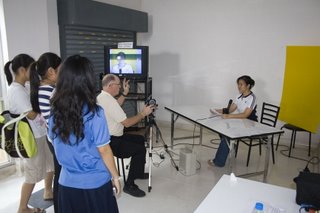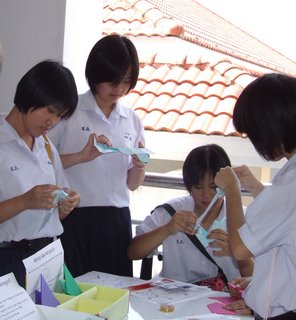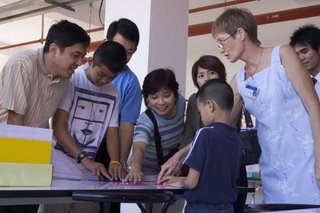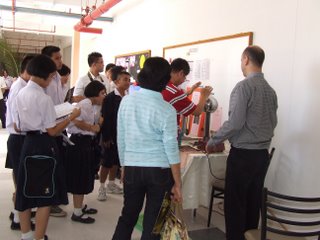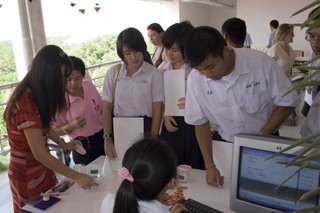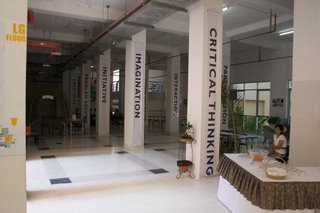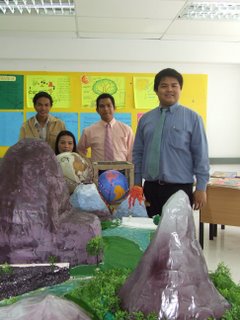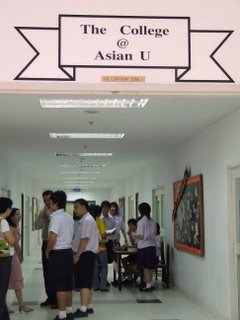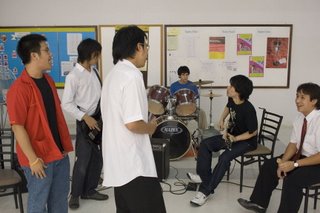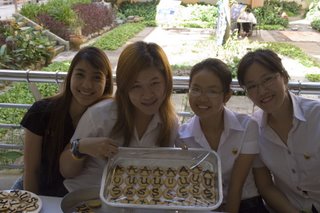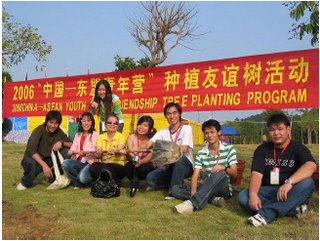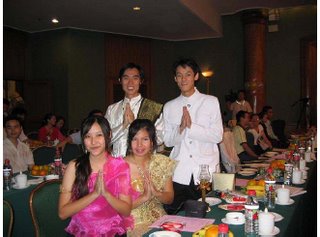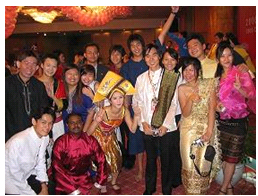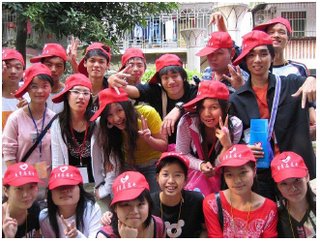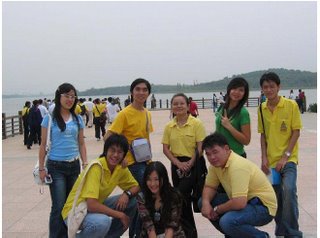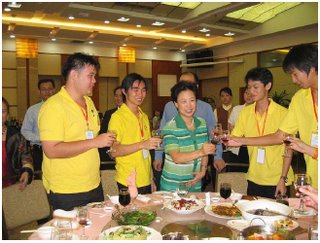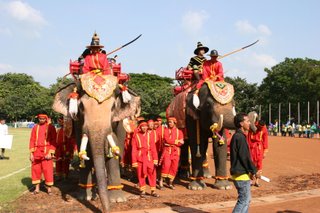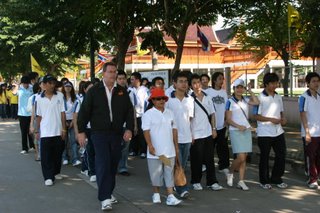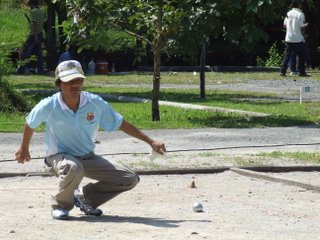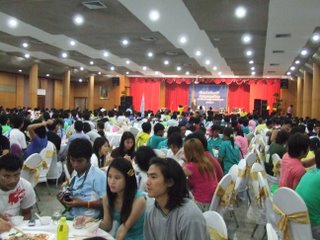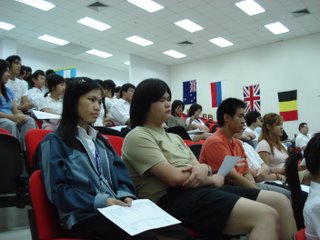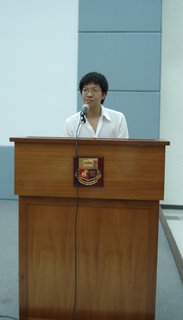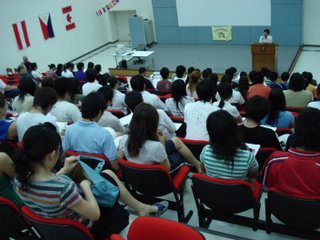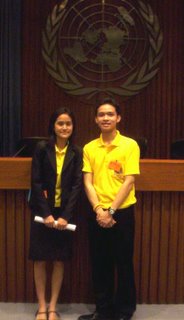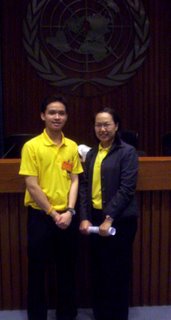 Field Trip: MV Doulos International Book Fair
Field Trip: MV Doulos International Book Fair Our class, third-year Bachelor of Arts students at Asian University, studying Intercultural Communication this semester, visited the MV Doulos while it was berthed at the Thai Navy docks in Sattahip.
We learned a lot about training to prepare people to work in intercultural situations, and some of the problems and opportunities such situations present.
Everybody who works on this ship is a volunteer. They even have to pay to be on board. They are basically supported by their family or people back home such as church communities.
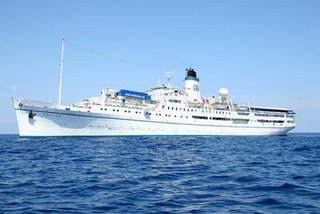
Training
Before joining this program, applicants are required to take tests, including an interview, in order to test their attitudes toward other cultures.
When they were accepted, the crew members all took a course in intercultural communication before working on the ship in order to learn to behave appropriately among 45 nationalities. For example, Brazilians are very open. They hug and kiss each other all the time. Junior, the Brazilian we spoke to, calls it “touchy”. They have to try to understand other cultures which are not “touchy”, like Thai culture!
The training depends on each country’s traditional culture. For Koreans, it may take five months of cultural training before going on board. For Germans, they have to read books in order to study multicultural issues and they also have to do a few weeks of training. Most volunteers practiced survival training for the sea and firefighting.
Everybody who was new to the ship came together in Holland in September 2005. The whole group was trained in more than technical things; they had to learn how to live together on the ship. The working culture on the ship is pretty much based on western ways. That’s why people from Asian countries may find it hard to adapt themselves to it.
Benefits of training
- They got to know why people act differently by studying their cultural backgrounds.
- They are able to apply specific rules in different countries. For example, the women crew members wear long skirts and headwear while visiting the Middle East.
- They have to respect others’ needs since they won’t all have their own private space. There’ll be 3-4 people from different countries living in a small cabin together. These people never had a chance to get to know each other before.
Normally, people join this program for two years. It usually takes them about six months to really feel at home.
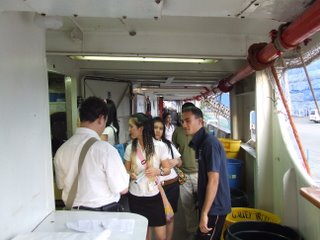
Culture on the ship
Do they have problems and conflicts over values and personal/cultural preferences? How do they deal with this?
The crew members don’t just try to adapt their whole personality to other cultures. If they feel offended by other people, they can’t just go tell that person. They have to try to understand that all cultures are different. The whole organization is different since life on board is multicultural. The MV Doulos organisation even has people in different countries the crew members can contact for help when they have problems. Sometimes, the volunteers make mistakes. They have to learn, and get used to new ways.
Another thing is homesickness. People get really homesick when they stay on the ship for a while. They just miss things they used to do at home.
After the crew members stayed together for awhile, they started to discover different personalities in other, new cultures. It was a challenge, and it was interesting too, to make friends outside their own culture.
The style of clothing the crew wears while in port depends on the place they’re visiting.
For example, at Phuket, they were allowed to wear sleeveless shirts, unlike most places they visit. For example, in India and Middle Eastern countries they had to always wear long sleeves.
They do have fixed rules about dress, though. Women are not allowed to wear mini skirts. They can’t wear clothes which are too tight, too short, and no tank-tops. This idea is for protection. Women crew members reported that when they dress like that other people (men!) focus on the person more than what they look like.
When there’s a lack of communication between different groups, the volunteers have to talk to each other in order to come up with a plan to help them communicate better. The best way is to talk to people yourself. If you treat people well, they treat you the same way. The crew members always meet at least once a week in order to talk about anything.
When everyone is used to the other cultures on the ship, homogenous cultural grouping becomes less. “Loud” people tend to mix with other “loud” people and quiet people tend to stay in a group of quiet people.
In order to make people feel welcomed on this ship, everybody needs to care about others more than themselves. They always help each other when they’re working.
When crew members finally go home, they get some kind of reverse culture shock too, since they have been away from their home countries for a long period of time. They find that people in their home countries seem to be strange. Even things that they think are very normal, people in their countries may not do. They have to learn to adjust themselves all over again!
The thing that impressed me most was:
EVERYONE HAS EQUAL RIGHTS ON THIS SHIP
Even the captain follows the same rules as everyone else. Wow!
The more this ship travels, the more people want to join it.
Want to find out more about the MV Doulos? Check this out: www.mvdoulos.org
Wacharin Chaisiriphan (First), 3rd year Asian University student.
